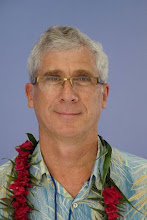One of the best features of the World Wide Web is access to materials. The hardest decision, as anyone knows who uses the Web, is deciding what to focus on. Recently I chanced upon the website of All Saints of North America Orthodox Church, and to my delight found some excellent resources on Celtic Christianity. The site has several resources, included an interesting audiofile lecture by Fr. Young on The Uniqueness of Celtic Monasticism, and also a useful essay on Celtic Monasticism: A Model of Sanctity. There are also some handsome brochures on the Life of St. Patrick and St. Brigid, but the real gems are the first two items mentioned.
You should take the time to listen to the lecture, and read the essay. I listened with great interest to The Uniqueness of Celtic Monasticism this morning. There, Fr. Aleksey Young emphasises the only way to properly understand Celtic Monasticism, is remembering the close connection between Celtic and Orthodox spiritual traditions. The Celtic Christians were more like the Byzantine or Slavic Orthodox Christians that the Latin or Northern European Christians. More specifically, it was through the Desert Fathers, and writers like John Cassian, who helped shape the Celtic "brand".
What is most interesting, is what Young pinpoints as the "unique contribution" of Celtic Monasticism. And that was the emphasis on peregrinatio, or pilgrimage, or as we might say today, "our faith journey". Pilgrimage-at least in its broadest sense-included the willingness to wander for the love of God, the willingness to place oneself in exile (and the unfamiliar) with the belief that such detachment brings with it, a deeper intimacy with God. Moreover, these faith journeys were taken for the main purpose of achieving personal salvation (St. Paul had said to "work out one's salvation"), and were outer manifestations of the inner search. Preaching, and the spreading the Gospel were a secondary by product of this search. Such a bold and daring notion of faith led many Celtic monks to cast everything to the wind, and it was common for the monks to embark on journeys in their coracles without oars, rudders, relying upon God alone to take them wherever He willed; Scotland, England, and to other parts in Europe.
Many Celtic saints demonstrate this wild abandon to God, and to the Spirit. But perhaps the most famous example comes from St. Brendan's mountain prayer:
Shall I abandon the comforts and benefits of my home,
seeking the island of promise our fathers knew long ago,
sail on the face of the deep where no riches or fame
or weapons protect you, and nobody honors your name?
Shall I take leave of my friends
and my beautiful native land,
tears in my eyes
as my knees mark my final prayer in the sand?
King of the mysteries, can I trust You on the sea?
Christ of the heavens,
and Christ of the ravenous ocean wave,
I will hold fast to my course
through the dangers I must brave.
King of the mysteries, angels will watch over me,
Christ of the mysteries, when I trust You on the sea.
In Celtic Monasticism: A Model of Sanctity Young argues as other authors have done, that the Celtic model is one which can help to revive the church, through an emphasis on simplicity of faith and lifestyle. "For the Celts, simplicity wasn't so much a question of externals-like furniture, architecture, and so forth. It was something internal, an it was founded upon the phrase, "Thy will be done". This meant placing absolute trust in God's will, not our own, with every decision in life, including one's health, finances, and career. It also meant, dying to oneself, and one's own plans and desires. Understandably, the Cross of Christ was central to the Celtic thinking, and reminded them, that they needed to die to self. Perhaps this was one reason the high Celtic crosses were became so prominent as holy sites. The monks understood, that the Christian faith demands one's life, one's all. This is incarnational Christianity at it's best; a faith which changes hearts, lives and behaviors. Such an understanding offers us a fuller view of Celtic Christianity, one which over emphasizes the scholastic, and intellectual aspect of the tradition, focusing on the copying and transmission of Greek and Latin manuscripts, as well the Old and New Testament. A countering stress on personal sanctification provides a fresh new dimension, and perspective as to what may have motivated many of the monks.
Tuesday, November 17, 2009
Subscribe to:
Post Comments (Atom)



MOnasticism is a chilling concept to me. I can envision old men in sackcloth huddled in a cave or hut denying themselves sustenance so as to be enlightened. Sounds like an act of "salvation by works"!
ReplyDeleteThe Celtic church spread due to it's focus on helping pagan tribes learn practical skills such as farming, woodwork etc. They served in a selfless practical way and were not focused on "denial of the flesh". They saw nature as sacred and the human body was part of God's wonderful creation so why abuse it. The idea of "evil flesh" came out of pagan teachings and "gnostic" mystery cults. Celtic missionaries had an "holistic" view and believed in the sustenance of body soul and spirit. I am afraid there is an attempt to paint the Celtic church with the Roman brush! Just a few thoughts off the top of my head! Thank you and God's blessings on you. Robin of Turriff